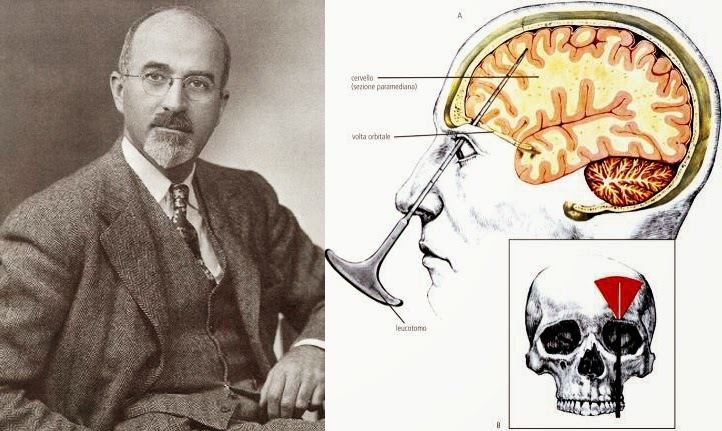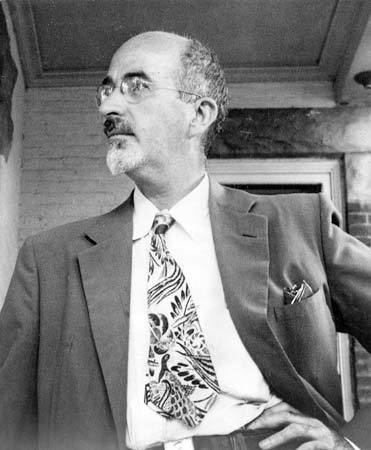Name Walter Freeman | Role Physician | |
 | ||
Education Yale UniversityUniversity of Pennsylvania Medical School Spouse Marjorie Lorne Franklin (m. 1924–1970) People also search for Antonio Egas Moniz, James W. Watts, Walter Jackson Freeman III Books Psychosurgery, in the Treatment of Mental Disorders and Intractable Pain Children Walter Jackson Freeman III Parents Walter Jackson Freeman I, Corinne Keen | ||
Walter Jackson Freeman II, M.D. (November 14, 1895 – May 31, 1972) was an American physician who specialized in lobotomy.
Contents

Biography and early years

Walter J. Freeman was born on November 14, 1895 to a privileged family. He was raised in Philadelphia, Pennsylvania by his parents. Freeman was also known for his eccentricities and he complemented his theatrical approach to demonstrating surgery by sporting a cane, goatee, and a narrow-brimmed hat.

Freeman's grandfather, William Williams Keen, was well known as a surgeon in the Civil War. His father was also a very successful doctor. Freeman attended Yale University, which at the time was Yale College, beginning in 1912 and graduated with his undergraduate degree in 1916. He then moved on to study neurology at the University of Pennsylvania Medical School. While attending medical school he studied the work of William Spiller and idolized his groundbreaking work in the new field of the neurological sciences. William Spiller also worked in Philadelphia and was credited by many in the world of psychology as being the founder of neurology. Freeman applied for a coveted position working alongside Spiller in his home town of Philadelphia, but was rejected.
Shortly afterward, in 1924, Freeman relocated to Washington D.C. and started practicing as the first neurologist in the city. Upon his arrival in D.C., Walter Freeman began work directing labs at St. Elizabeth's Hospital. Working at the hospital and witnessing the pain and distress suffered by the patients encouraged him to continue his education in the field. Freeman earned his PhD in neuropathology within the following few years and secured a position at George Washington University in Washington, D.C. as head of the neurology department.
In 1932 his mother died at the Philadelphia Orthopedic Hospital in Philadelphia, Pennsylvania.
Lobotomy
The first systematic attempt at human psychosurgery – performed in the 1880s–1890s – is commonly attributed to the Swiss psychiatrist Gottlieb Burckhardt. Burckhardt's experimental surgical forays were largely condemned at the time and in the subsequent decades psychosurgery was attempted only intermittently. On November 12, 1935, a new psychosurgery procedure was performed in Portugal under the direction of the neurologist and physician Egas Moniz. His new "leucotomy" procedure, intended to treat mental illness, took small corings of the patient's frontal lobes. Moniz became a mentor and idol for Freeman who modified the procedure renaming it the "lobotomy". Instead of taking corings from the frontal lobes, Freeman's procedure severed the connection between the frontal lobes and the thalamus. Because Freeman lost his license to perform surgery himself after his last patient died on the operating table, he enlisted neurosurgeon James Watts as a research partner. One year after the first leucotomy, on September 14, 1936, Freeman directed Watts through the very first prefrontal lobotomy in the United States on housewife Alice Hood Hammatt of Topeka, Kansas. By November, only two months after performing their first lobotomy surgery, Freeman and Watts had already worked on 20 cases including several follow-up operations. By 1942, the duo had performed over 200 lobotomy procedures and had published results claiming sixty three percent improved, 23 percent were reported to be unchanged and fourteen percent were worse after the surgery.
After almost ten years of performing lobotomies Freeman heard of a doctor in Italy named Amarro Fiamberti who operated on the brain through his patients' eye sockets, allowing him to access the brain without drilling through the skull. After experimenting with novel ways of performing these brain surgeries, Freeman formulated a new procedure called the transorbital lobotomy. This new procedure became known as the "icepick" lobotomy and was performed by inserting a metal pick into the corner of each eye-socket, hammering it through the thin bone there with a mallet, and moving it back and forth, severing the connections to the prefrontal cortex in the frontal lobes of the brain. He performed the transorbital lobotomy surgery for the first time in Washington D.C. on a housewife named Sallie Ellen Ionesco. This transorbital lobotomy method did not require a neurosurgeon and could be performed outside of an operating room without the use of anesthesia by using electroconvulsive therapy to induce seizure. The modifications to his lobotomy allowed Freeman to broaden the use of the surgery, which could be performed in psychiatric hospitals throughout the United States that were overpopulated and understaffed. In 1950 Walter Freeman's longtime partner James Watts left their practice and split from Freeman due to his opposition to the cruelty and overuse of the transorbital lobotomy.
Following his development of the icepick lobotomy, Freeman began traveling across the country visiting mental institutions in his personal van, which he called the "lobotomobile". He toured around the nation performing lobotomies and spreading his views and methods to staff to perform the operation. Freeman's name gained popularity despite the widespread criticism of his methods following a lobotomy on President John F. Kennedy's sister Rosemary Kennedy, which left her with severe mental and physical disability. A memoir written by former patient Howard Dully, called My Lobotomy documented his experiences with Freeman and his long recovery after undergoing a lobotomy surgery at 12 years of age. Walter Freeman charged just $25 for each procedure that he performed. After four decades Freeman had personally performed as many as 3,439 lobotomy surgeries in 23 states, of which 2,500 used his ice-pick procedure, despite the fact that he had no formal surgical training. In February 1967, Freeman performed his final surgery on Helen Mortensen. Mortensen was a longterm patient and was receiving her third lobotomy from Freeman. She died of a cerebral hemorrhage, as did as many as 100 of his other patients, and he was finally banned from performing surgery. His patients often had to be retaught how to eat and use the bathroom. Relapses were common. Some never recovered and about fifteen percent died from the procedure. In 1951, one patient at Iowa's Cherokee Mental Health Institute died when Freeman suddenly stopped for a photo during the procedure, and the surgical instrument accidentally penetrated too far into the patient's brain. Freeman wore neither glove nor mask during these procedures. He lobotomized 19 minors including a 4-year-old child. At age 57, Freeman retired from his position at George Washington University and opened up a modest practice in California.
An extensive collection of Freeman's papers were donated to The George Washington University in 1980. The collection largely deals with the work that Freeman and James W. Watts did on psychosurgery over the course of their medical careers. The collection is currently under the care of GWU's Special Collections Research Center, located in the Estelle and Melvin Gelman Library.
He died on May 31, 1972.
Contributions to psychiatry
Walter Freeman nominated his mentor António Egas Moniz for a Nobel prize and in 1949 Moniz won the Nobel prize in physiology and medicine. He pioneered and helped open up the psychiatric world to the idea of what would become psychosurgery. At the time it was seen as a possible treatment for severe mental illness, but "within a few years, lobotomy was labeled one of the most barbaric mistakes of modern medicine." He also helped to demonstrate the idea that mental events have a physiological basis. Despite his interest in mind, Freeman was "uninterested in animal experiments or understanding what was happening in the brain". Freeman was also co-founder and president of the American Board of Psychiatry and Neurology from 1946 to 1947 and a contributor and member of the American Psychiatric Association.
